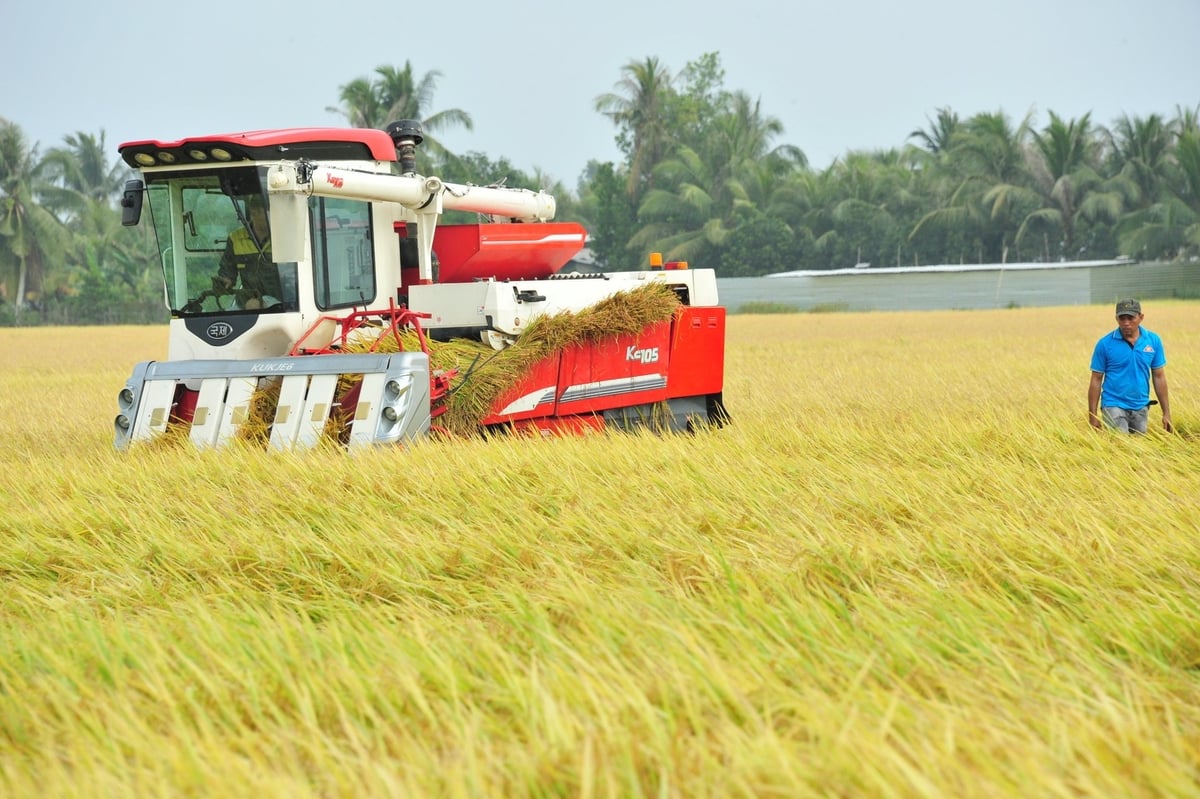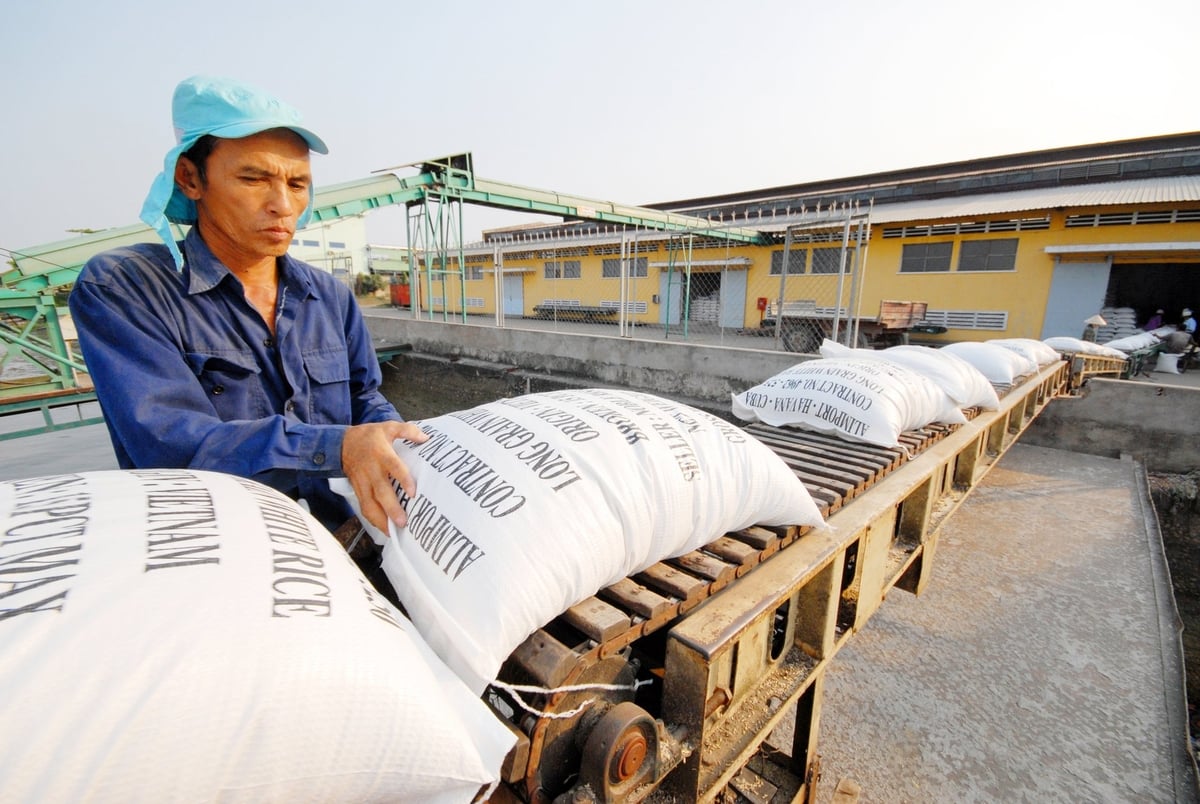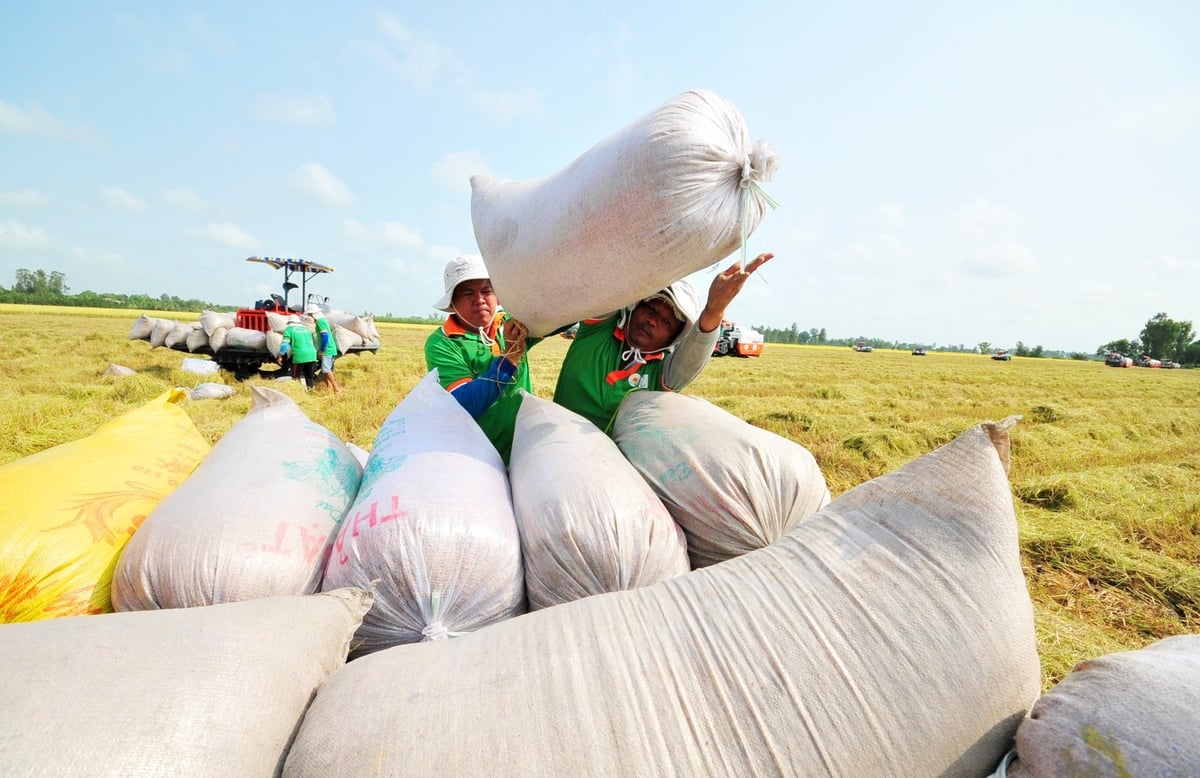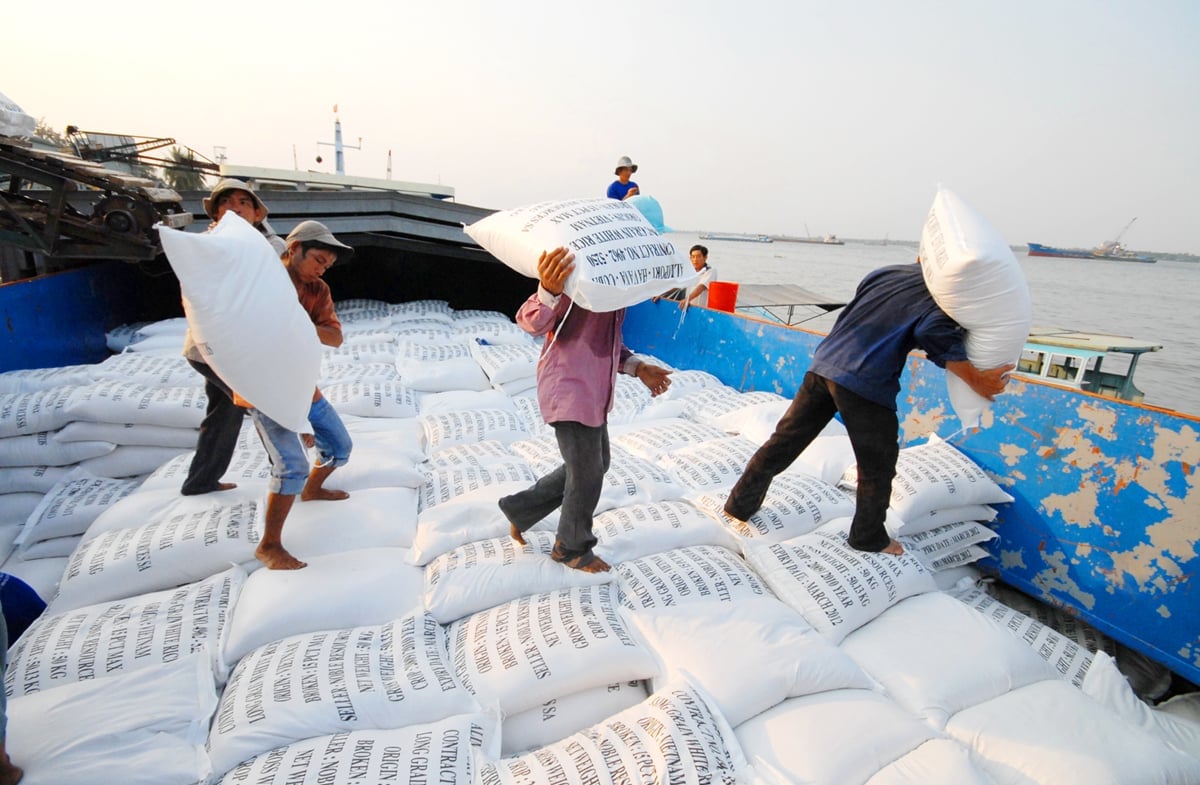December 1, 2025 | 16:43 GMT +7
December 1, 2025 | 16:43 GMT +7
Hotline: 0913.378.918
December 1, 2025 | 16:43 GMT +7
Hotline: 0913.378.918

Farmers in the Mekong Delta harvest the 2024–2025 winter–spring rice crop. Photo: Le Hoang Vu.
From National Granary to Global Rice Brand
Against the backdrop of global challenges such as food security, climate change, and increasingly stringent consumer demands, Vietnam’s rice sector—particularly in the Mekong Delta—is presented with a significant opportunity to redefine its position on the global agricultural map. Once known only as the country’s granary, the Mekong Delta is now transforming into a hub for producing and exporting high-quality, low-emission rice that meets international standards for clean and sustainable food.
Blessed with favourable soil, climate, and an extensive irrigation system, the Mekong Delta contributes roughly 50% of Vietnam’s total rice output and over 90% of its rice exports. This not only secures domestic food supply but also underpins Vietnam’s position as one of the world’s top three rice exporters.
In 2024, Vietnam’s rice exports reached a record high of over 9.18 million tonnes, generating more than USD 5.7 billion. This achievement reflects a notable shift from volume to value. High-quality rice now accounts for 60–70% of exports, with branded premium rice making up around 15%. In particular, high-end varieties such as fragrant rice, organic rice, and Japonica have strengthened their foothold in demanding markets like the EU, US, Japan, and the Middle East.

In 2024, Vietnam’s rice exports reached a record high of over 9.18 million tonnes, with an export value exceeding USD 5.7 billion—an impressive figure that reflects a strong shift from volume to quality. Photo: Le Hoang Vu.
Despite these impressive achievements, the rice industry faces a host of new challenges. Climate change, saltwater intrusion, freshwater scarcity, rising input costs, and strict requirements for food safety and environmental protection pose significant difficulties for both rice farmers and export businesses.
In response, the sector is moving towards a model focused on high-quality, low-emission rice production that is sustainable and integrated within export value chains. A key strategic move is the government-approved plan to develop one million hectares of specialised, high-quality, low-emission rice cultivation in the Mekong Delta by 2030.
According to Le Thanh Tung, Vice Chairman of the Vietnam Rice Industry Association, the one-million-hectare scheme not only aims to restructure production in a more concentrated and modern direction but also to increase value addition, reduce emissions, boost farmers’ incomes, and establish a sustainable competitive advantage in the global market. Pilot models implemented in provinces across the Mekong Delta have already shown promising results: a 50% reduction in seed usage, 30% cuts in fertilisers and agrochemicals, and an increase of VND 4–5 million in profit per hectare per season.

From its role as the nation’s rice granary, the Mekong Delta is transforming into a hub for producing and exporting high-quality, low-emission rice that meets the green and clean standards of international markets. Photo: Le Hoang Vu.
Linkages – the “Key” to Market Expansion
One of the core components of building a sustainable rice industry is strengthening linkages across the entire value chain—from production and processing to distribution. Connecting farmers and cooperatives with processing and export enterprises helps ensure stable output, improves product quality, and enhances traceability—an increasingly vital factor in global trade.
According to Do Ha Nam, Chairman of the Vietnam Food Association (VFA), Vietnamese businesses are gradually shifting from a mindset of "selling what we have" to "producing what the market needs." Many enterprises are now investing in modern processing technologies, conducting in-depth market research, and building strong Vietnamese rice brands. As a result, Vietnamese rice has reached more than 150 countries and territories, including premium markets in Europe, the Americas, and Oceania.
However, to expand market share and increase export value, the sector still needs greater support through policies on financial aid, green credit access, tax refunds, and logistics infrastructure development. In particular, storage facilities, specialised ports, and domestic transport systems must be improved to reduce costs and post-harvest losses.

The one-million-hectare high-quality, low-emission rice scheme not only helps restructure the industry toward more modern and consolidated production but also enhances value addition, reduces emissions, and increases farmers’ incomes. Photo: Le Hoang Vu.
An urgent priority is the development of a national brand for Vietnamese rice—one that goes beyond logo design or packaging. Such a brand must be intrinsically tied to quality, origin, environmentally friendly production processes, and the cultural values of local communities.
Do Ha Nam highlighted that several rice products have already successfully built strong brand identities, including ST24, ST25, Hoa Sua organic rice, and Loc Troi fragrant rice. These cases demonstrate the vast potential of Vietnamese rice if supported by a well-planned strategy on branding and geographical indication protection.
It is clear that global consumption trends are leaning towards agricultural products that are clean, organic, and environmentally and socially responsible. This poses both pressure and opportunity for Vietnam’s rice sector—particularly in the Mekong Delta, which is among the areas most affected by climate change. This region must therefore take the lead in implementing green agriculture models that are circular, resource-efficient, and low in greenhouse gas emissions.
Key approaches such as the “one must, five reductions” model, “three reductions, three gains,” organic farming, climate-smart agriculture, digitalised production processes, and the use of high-quality, climate-resilient rice varieties will be essential in helping Vietnamese rice retain its place on global dining tables—not merely as a top export, but as a symbol of sustainable and socially responsible agriculture.
Translated by Huong Giang

(VAN) The Institute of Agricultural Sciences for Southern Vietnam (IAS) marked its 100th anniversary in Ho Chi Minh City, celebrating a century of growth as a leading institute contributing significantly to Viet Nam’s agricultural development.

(VAN) An increasing number of livestock farms are using biogas generators to create a source of renewable electricity, helping to save costs and mitigate environmental pollution.

(VAN) Small changes in rice cultivation, from irrigation methods and straw collection to input management, are paving a new way for Vietnam's agriculture in the journey toward emission reduction.

(VAN) With the project of converting biogas into renewable electricity, Australia is both helping pig farms reduce their energy costs by up to 25% and contributing to environmental protection.
![Hue aims for Net Zero: [1] Initial steps from green transportation](https://t.ex-cdn.com/nongnghiepmoitruong.vn/608w/files/huytd/2025/11/28/0853-anh-6-giao-thong-xanh-hue-094717_940-153724.jpg)
(VAN) For sustainable development, Hue City is implementing many solutions to promote green transportation, which is an important initial step on the journey to building a Net Zero Hue.

(VAN) Nghe An Province, one of the localities with the largest forest area in Vietnam, is set to gain significant benefits from the implementation of forest carbon credit payments.

(VAN) Circular agriculture helps Mekong Delta farmers cut greenhouse gas emissions while boosting incomes through efficient reuse of agricultural by-products.